STATEMENT

I’m curious about all manner of things and will often start by tracking an interesting question, then read, explore, make notes and drawing, and try to envision how it might be expressed visually (sketcbook pages above). I’m intrigued by scientific conjectures. Early on, I spent time reading about theoretical physics and I ran across Richard Feynman’s particle collision drawings. I began incising the little diagrams into the panel’s blank white surface, images only visible with close inspection. They symbolize what’s largely unseen, the cause and effect of energy at the quantum level. This adapted incised iconography, along with written poem fragments, scientific text and diagrams, and asemic script (detail below) is still part of how I start many paintings.

Travel and exposure to different cultures has profoundly impacted me. After a trip, sometimes an idea takes hold and a particular symbol arises from it. Visiting Tibet in 2000, I was moved by the monks’ daily use of bowls to collect and communally share whatever was given to them. Bowls line the monastery altars with the feeling of meaningful ritual and invocation. The frequent appearance of humble unadorned bowls in my artwork originated there and have continued to find placement in my paintings through the many years of my travels in the Himalayas. I consider them quiet contemplative objects, places for stillness and animating spirit. They act as symbolic containers representing what must be held and what must be released - the fluid cycle of giving and receiving.
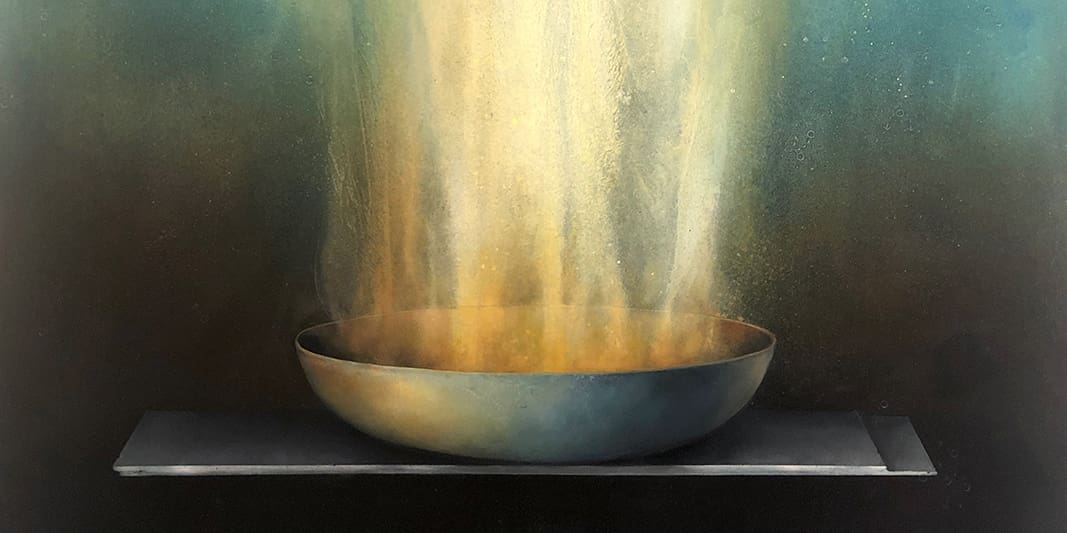
My relationship with the natural world always enlivens my spirit and informs my art. I spend a lot of time observing nature and being in the garden. When closely paying attention for hours while depicting the beauty of a natural form, it’s impossible not to notice the amazing details of its design, color, and patterns of growth and function. This is when painting is a form of meditation. I have come to understand that no thing presents itself as utterly passive or inert. The world is grace-full, numinous, and charged with limitless content that can only be intuited at times. Even its most obscure and ordinary parts have a sentient presence and contribute to an interconnected harmony.
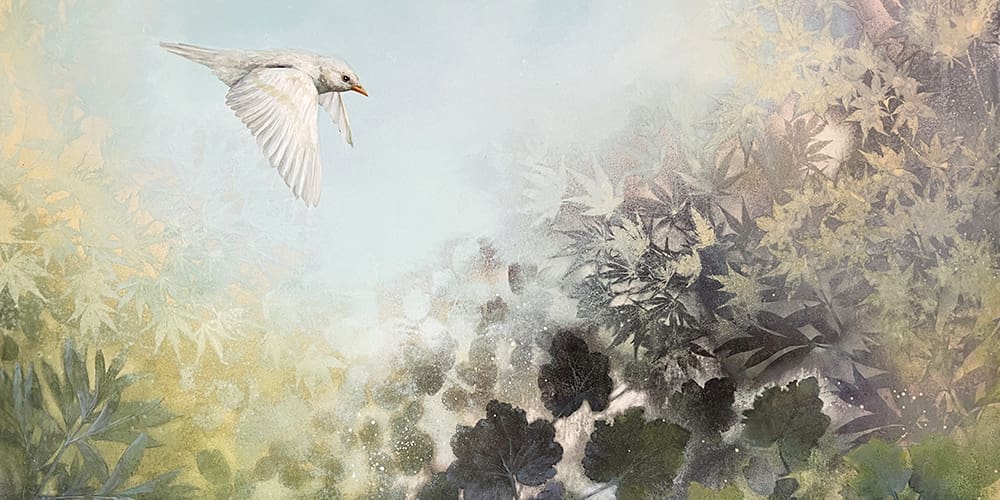
PROCESS
Done in the separate workshop space, I begin by a preparing the wood panels. I want the painting to have the feel of handcrafted objectness. The surface preparation begins by applying layers of a handmade gesso using a recipe that dates to the Renaissance (time-lapse video above). It’s an alchemist’s brew if ever there was one, very time-consuming, messy, and it never seems to turn out the same way. This involves many hours of layering then sanding before the surface is ready for paint.
Before painting I often draw or incise on the white gessoed surface. All of these inclusions barely show up until the painting process begins, and even then may get buried beneath layers of paint, but they act as an invocation and give detail and nuance to the finished work.
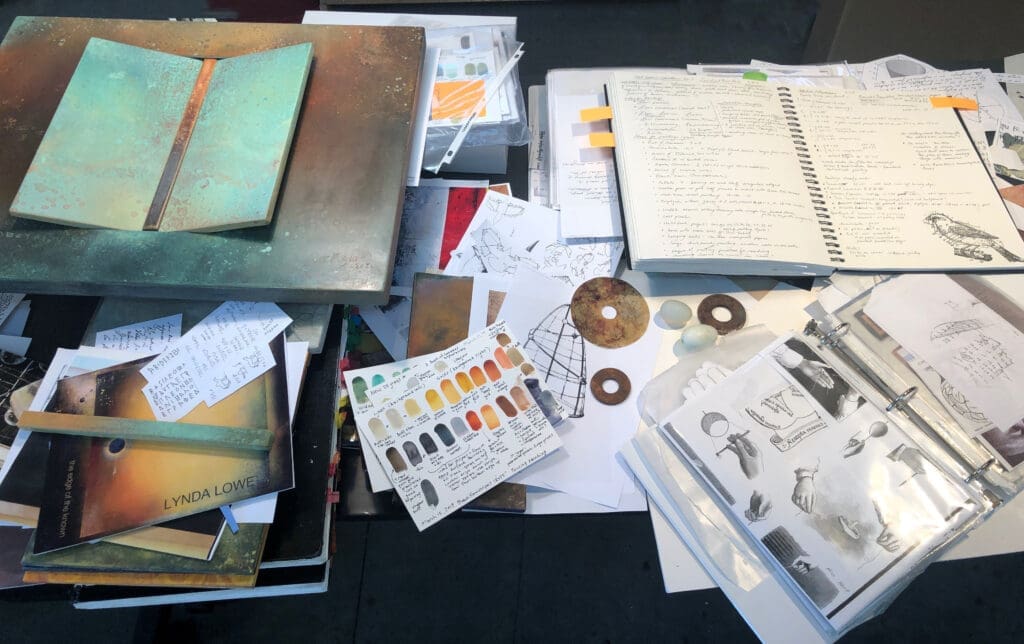
Trying to visualize a starting point before I begin painting, I typically explore an idea by doing some research, working in my sketchbook and on the computer, and looking around at objects or images I might want to include. Then I’ll leave behind any planning and surrender to the immediacy and unfolding discoveries within an artwork’s progression.
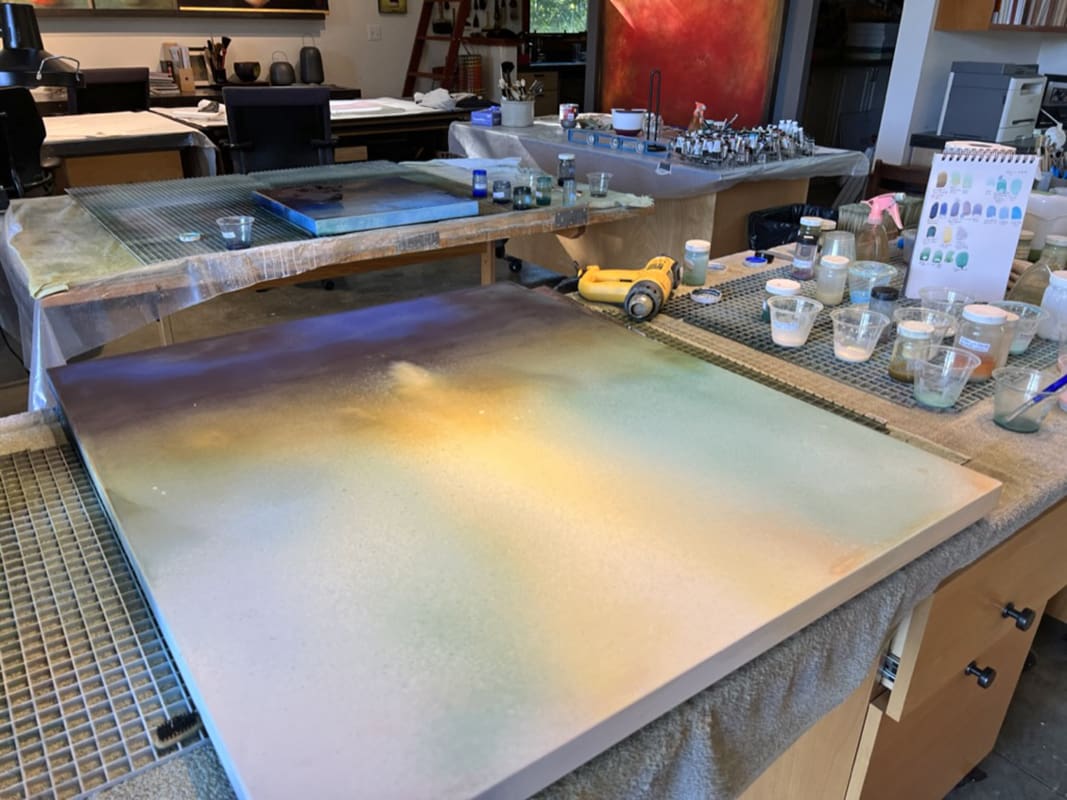
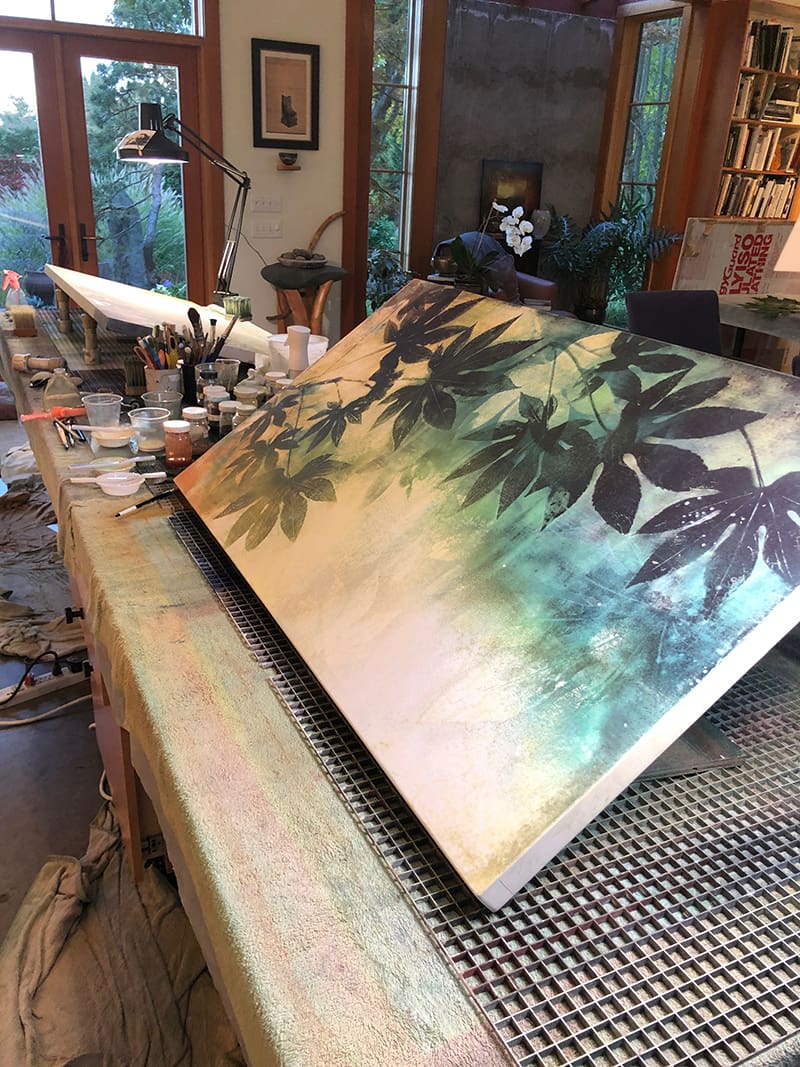
Early stages of painting are spontaneous and intuitive. There’s a strange alchemy to painting processes: part science in knowing the media, and part intuition and leaps of faith. On the gessoed surface I apply large areas of watercolor, adding and subtracting layers. I deliberately court unexpected chance for interesting effects. Water media is unpredictable in the way that I use it, sometimes yielding a swampy mess, sometimes revealing delicate stratifications and details. During this phase, I waver between feeling uncomfortably lost and playfully surprised, as I meander my way into a satisfying outcome of color, texture, and surface.

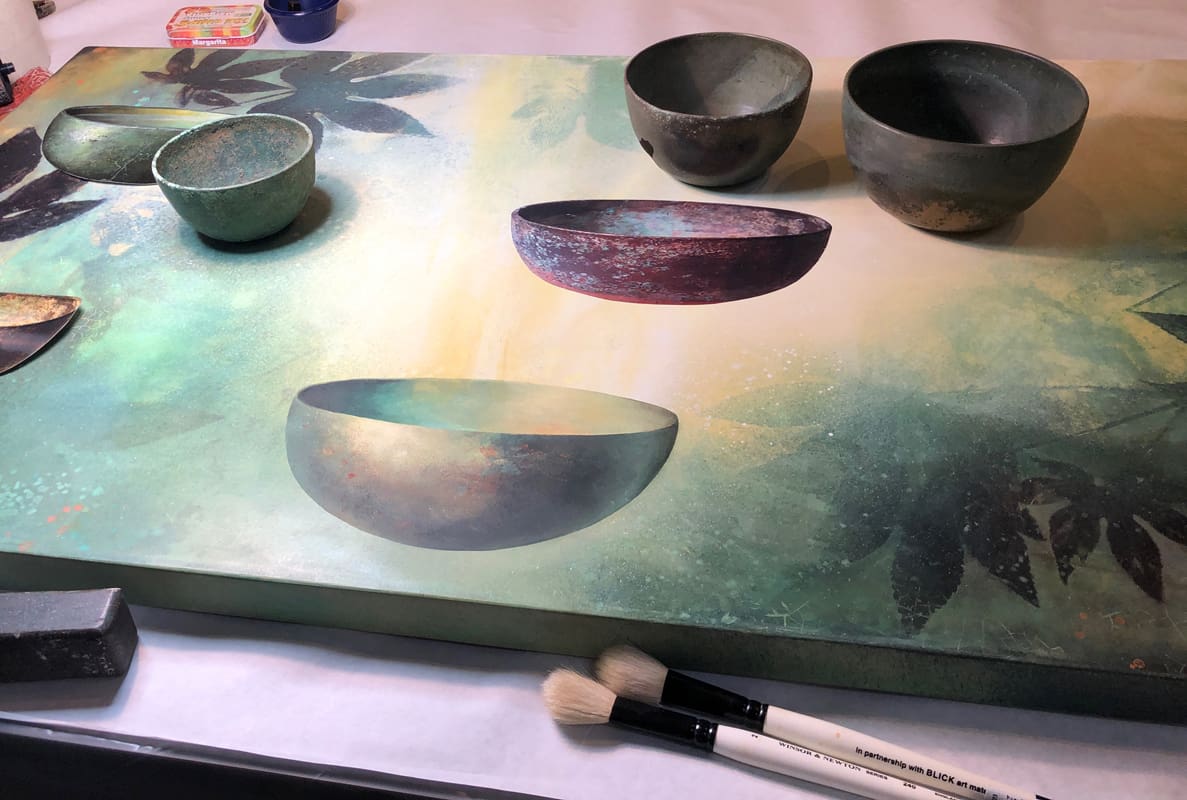
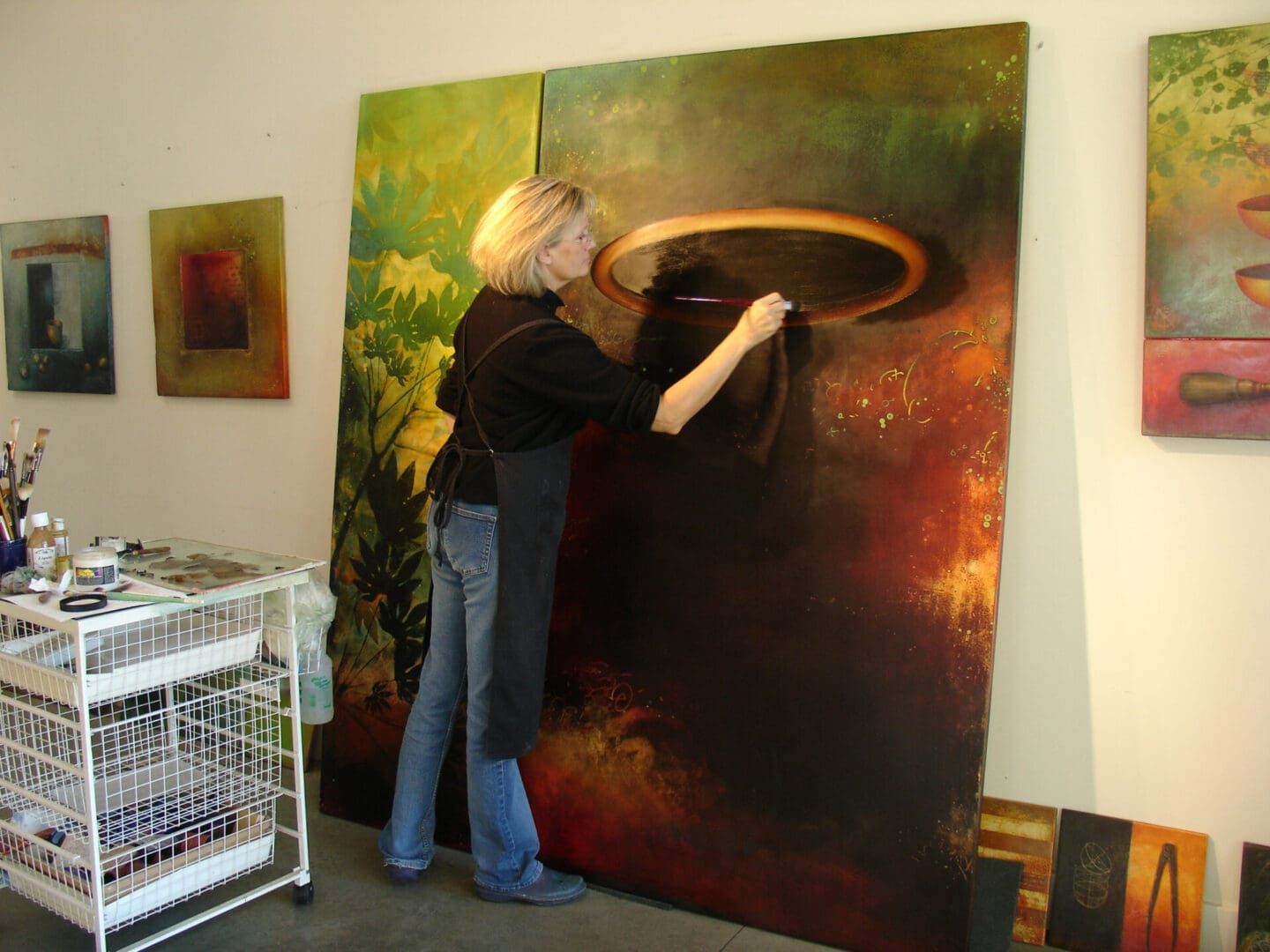
When the surface and imagery have taken shape and I have a good sense of where it’ll take me next, the panel is waxed. At this point I continue building the surface with other media including oil paint to carefully render realism. This sometimes involves using very fine brushes to achieve details against the underlayers of chance-dependent background effects in watercolor. This part of the process slows me way down and my work becomes more carefully considered. I want the finished painting to include both sponteous and deliberate aspects, to be an intriguing invitation from a distance and also reward the viewer when inspected closely.
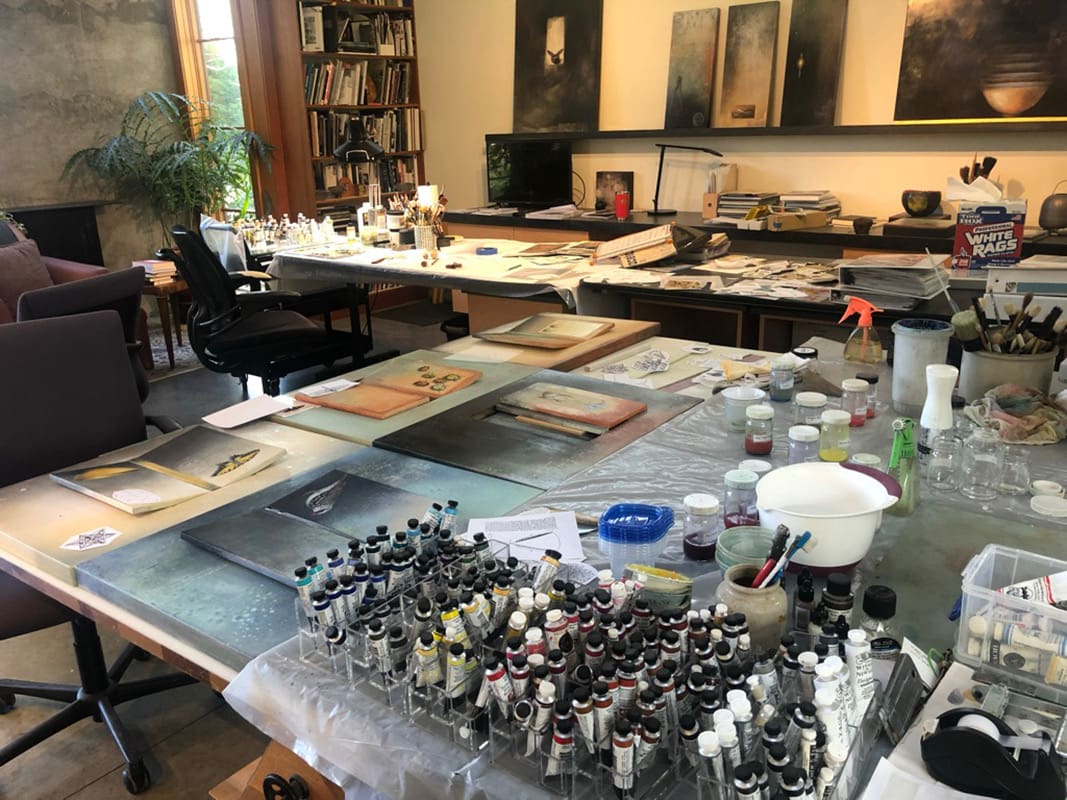
The studio spaces are set up to flexibly accommodate the different processes used and the big messes I’m prone to making. I enjoy the creative shifts in approach that each phase offers and the way in which they add different qualities to the finished work.